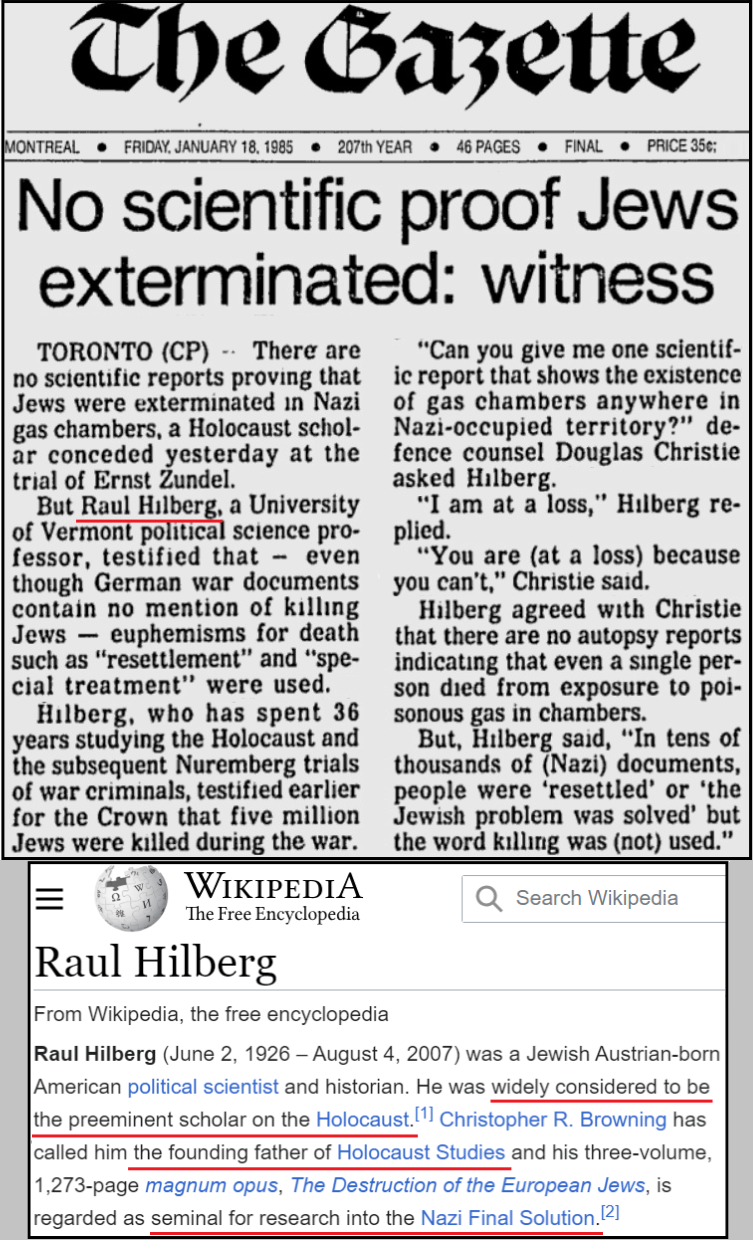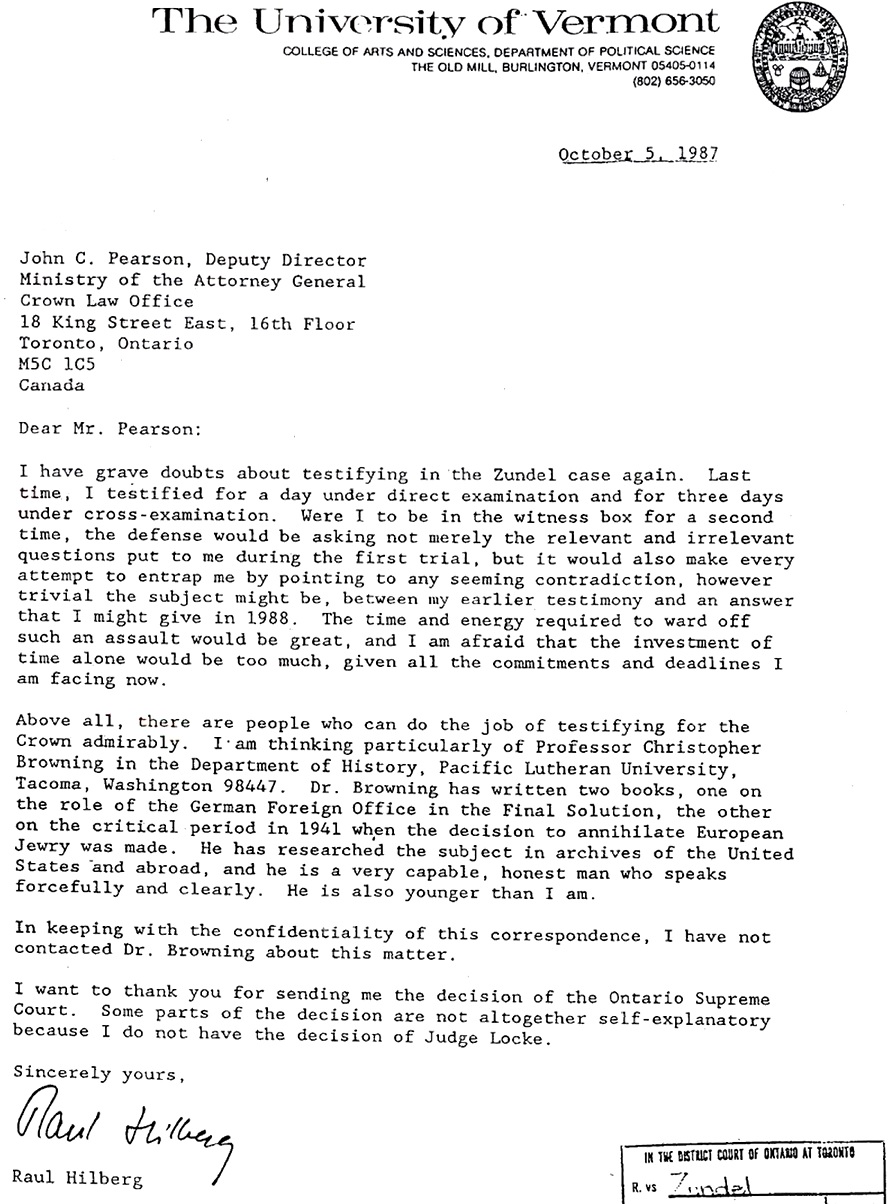bombsaway wrote: ↑Wed Nov 12, 2025 6:13 pm
HC Blog did a rebuttal of Alvarez on the Turner letter,
https://holocaustcontroversies.blogspot ... urner.html
The "suspicious" rune appears in other letters by Turner. It's therefore a marker of authenticity more than the opposite. The gas van is corroborated by numerous testimonies in the camp (nothing for a proper delousing van), Jews are referred to as "no longer existing" rather than moved elsewhere, the "delousing van" is referred to as being used to "clear" the camp, so if taken literally (assuming the revisionist perspective) it was not a delousing van but a mere transport vehicle. The assertion that Browning says the letter is inaccurate is misleading and also hurts the revisionist argument. If this is a matter of Turner "boasting" about killing Jews with a gas van when this didn't happen (not Browning's claim but whatever) that's an admission that that meaning is being pretty clearly conveyed by the letter, otherwise why would Turner have put it in. Furthermore, even if it was a lie, boasting about killing Jews with a gas van to ingratiate himself with superiors would be senseless unless such a policy was actually desirable from their perspective and so in place elsewhere.
Amused yawn
This feigned confidence of yours is transparent, bombsaway.
Keep in mind, my own assessment on this matter has been taking Turner's letter as authentic, at least initially, which is where my strongest argument lies (I simply noted Alvarez's interpretation for completeness' sake, after-the-fact). Turner's self-aggrandizement (e.g., claim of procuring a van which official historiography says was requested by Schäfer, with Meyszner and Turner having
zero involvement) align with Browning's characterization of Turner's report as "suspect, inaccurate, and self-serving" amid SS vs Wehrmacht turf wars. It altogether evokes
routine hygiene or transit operations in a typhus-ridden camp where Wikipedia notes "numerous influenza epidemics" and "many inmates freezing to death" in the 1941-2 winter, killing many Jewish inmates before a van supposedly arrived.
Testimonies of homicidal 'gas vans' in this case come from postwar [Soviet/Yugoslavian] interrogations of low-level figures like Andorfer and Enge (who received minimal sentences in the 1960s),
as always lacking physical corroboration (no forensics, blueprints, actual vans).
I am not sure what to say about your (and the HC blog's) ridiculous claim that "nicht mehr vorhandenen" ("no longer there") actually means "no longer existing" in some absolute, ontological sense. Everything I am finding in searches for translation and contemporary context of this phrase (tried translation services, AI, etc.) consistently indicate this phrase has no such necessary interpretation and is far more commonly used to refer to what is present or available in some accessible way (e.g., like "the items are no longer vorhanden in the warehouse" = not there/stock depleted, not vaporized). It seems this is yet another example of your camp grasping at fabricated straws.
Per Turner's usage, statements of "no longer there" and "clearing" (Räumung) best describe internment/dispersal to labor sites, especially as Sajmište became a well-documented transit hub under Meyszner's oversight and post-May 1942. The issue being "settled once and for all" via Geneva-released POWs being "not free for too long" explicitly signals
re-imprisonment/control, not killing, while any exaggeration reflects Turner's well-known boastfulness in a reprisal context (i.e., a few thousand males shot as partisans), not endorsement of some nonexistent 'gassing' policy.
Worth noting there is also total absence of any Himmler/Wolff replies probing this matter further.
Once again: only with "Holocaust goggles" can someone read this document as evidence of 'homicidal gas wagons'.


